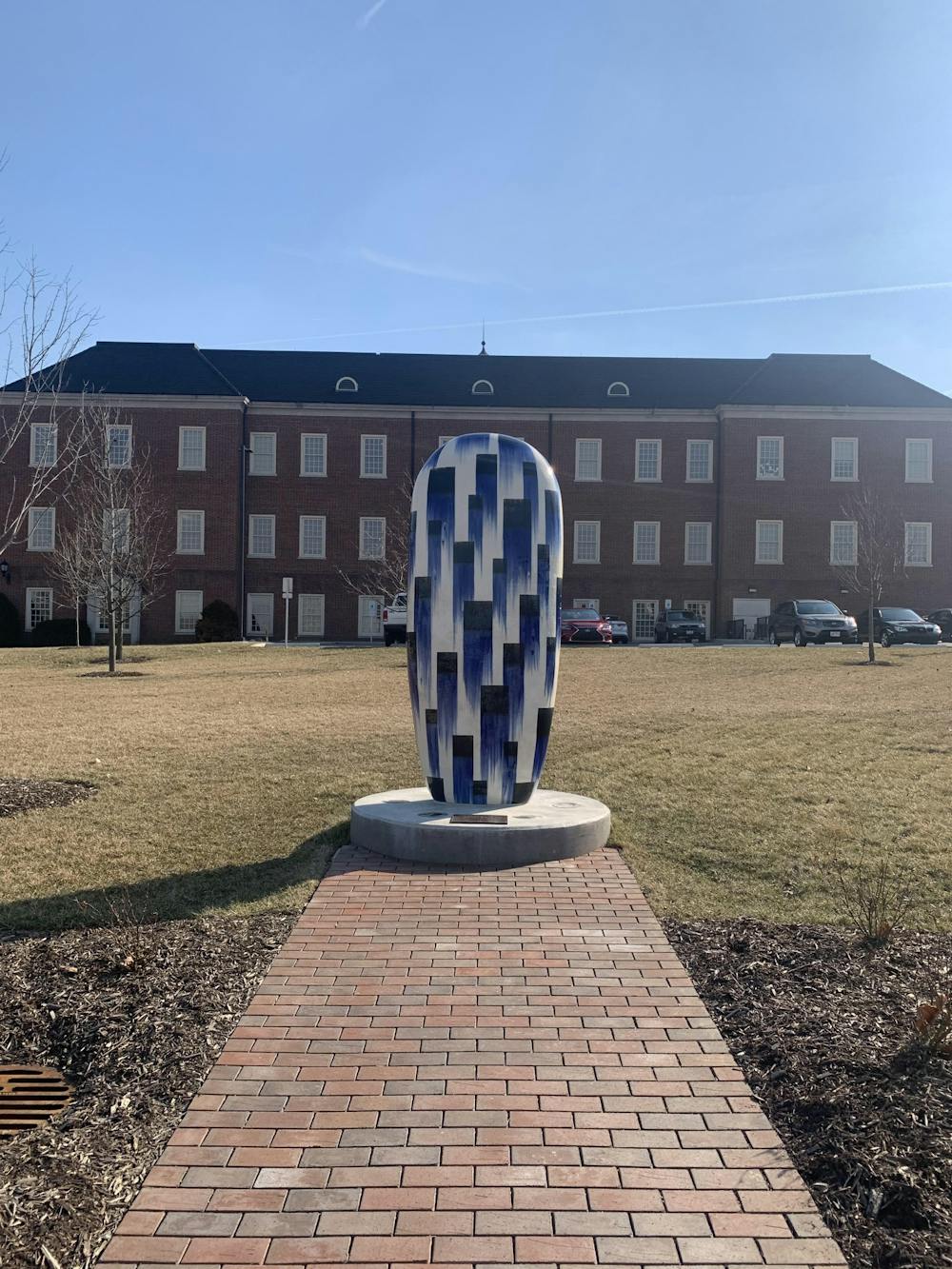This school year, a new artistic statue was added along the sidewalk past Benton Hall leading to North Quad, prompting questions and amusement from the Miami University community.
Senior gerontology major Lucas Adams and senior education Major Keresa Murray both live on North Quad and see the statue frequently.
“It was weird because I wasn’t here last semester, and I come back and there’s just an egg,” Adams said. “I was like, ‘alright.’”
Murray was similarly confused.
“They didn’t put the plaque there, like, when they built it,” Murray said. “So it was just plaqueless for like a whole semester.”
The statue is called “Capturing The Scent of Rain” and was donated by Miami alumnus Thomas Smith.
Robert Wicks, director of the Miami University Art Museum played a large role in overseeing the donation and installation of the artwork.
“Tom Smith has been a major donor to the art museum from early on, and in the mid-90s, he donated the Mark di Suvero sculpture which is called ‘For Kepler,’” Wicks said. “It is one of his iconic works. He also gave a fund for the art museum sculpture park for its maintenance and upkeep.”
Smith has also donated Ursula von Rydingsvard’s “Heart in Hand,” which is placed around the Schwietz Arts Plaza.
“A third work came down the pipe just a little later,” Wicks said. “That one was dedicated in October 2020 and was the Jun Kaneko piece. And that one interestingly started its life as just a number. He had a series called ‘Dango,’ which refers to a Japanese rice flour dumpling. But when we corresponded with the artist to ask, ‘Do you have a name for it?’ He responded with, ‘Capturing the Scent of Rain.’”
Murray said she doesn’t understand why the statue was placed near the engineering building.
“It’s weird being at a divide. Like, you can stop there if you want, but I don’t know,” Murray said. “I wish it was more engineer-related if that was the vibe. Because it’s fine to have the heartish statue that’s like right next to the art building because that makes sense.”
Enjoy what you're reading?
Signup for our newsletter
Wicks said finding a home on campus for “Capturing the Scent of Rain” was a difficult process.
“The challenge then was finding a location,” Wicks said. “There is a master plan for the university with ideal locations for things like public art, but that’s in a constant state of flux depending on funding resources. So we found on North Quad there was a nice location for the Jun Kaneko piece.”
First-year diplomacy and global politics major Caitlin Zawodny also sees “Capturing the Scent of Rain” on a daily basis.
“When I first saw it, I was a little confused on what it was, but at least it gives an easy way if you’re meeting up with a friend, it’s a landmark that everyone can identify,” Zawodny said.
Despite mixed reactions from students, Wicks said Smith plans to donate more pieces in the future.
“Now, there’s another work, a fourth piece,” Wicks said, “that is actually a steel coil type piece, and we’re looking for a location.”
Wicks is hopeful for the future of art installations across Miami’s campus.
“Hopefully, there would be a way for something to come up on a map that says if you want more information about this piece, click here,” Wicks said. “I think that is part of a plan with an interactive map of Miami’s campus that would include that level of detail.”
Most students have no idea about these pieces’ stories, but that’s something Wicks hopes to change by using technology to spread understanding of the various installations across campus.
“How can we begin to use these as educational opportunities as understanding difference and understanding different approaches to the world that these art styles represent?” Wicks said. “I think that the fact that everyone has their smartphone that, one day, they’ll put a QR code there where you can get additional information about the piece about the artist and about the art tradition, so that you don’t say, ‘Oh, what is that? I have no clue.’”




